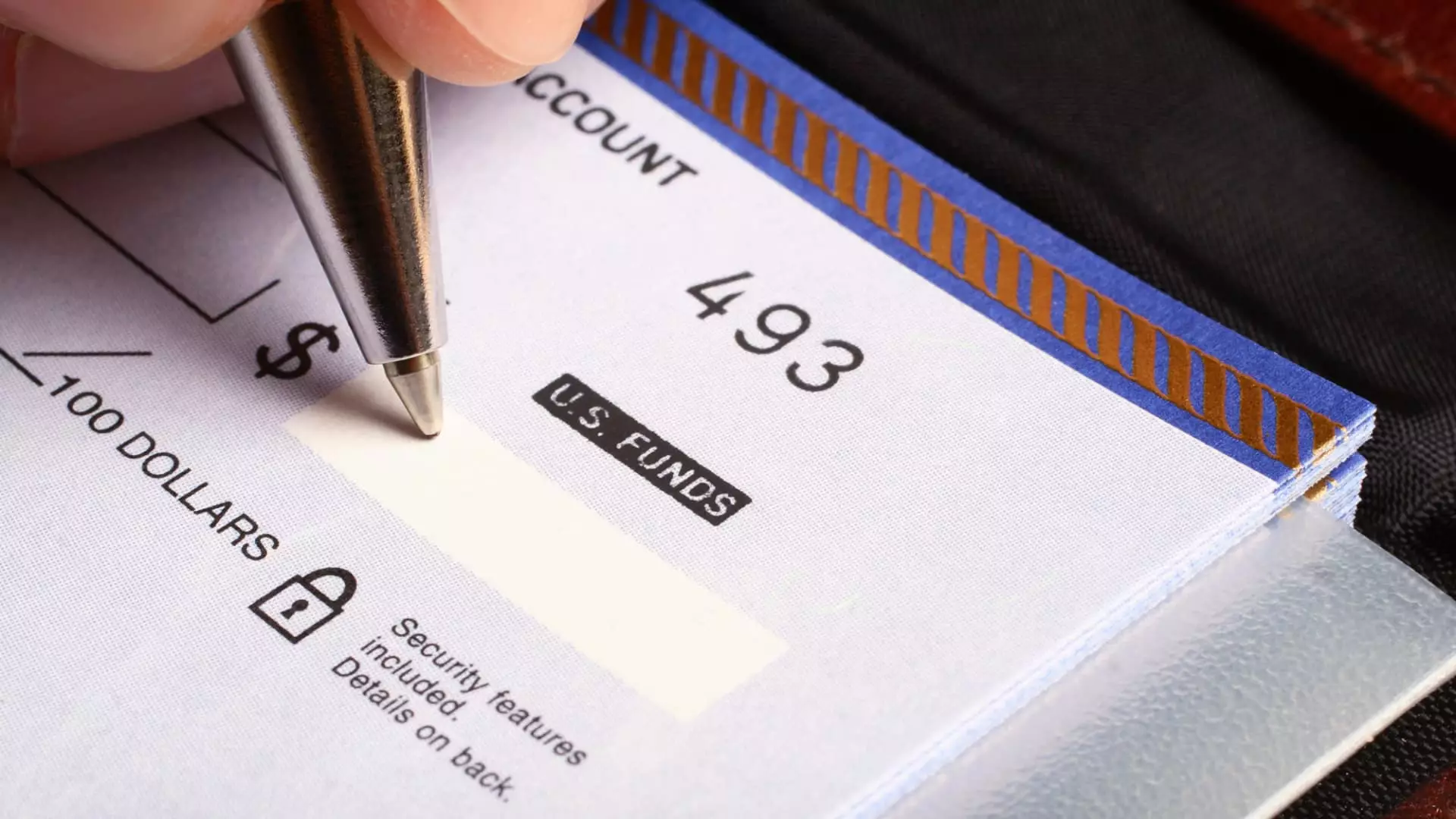The gradual decline of paper checks has reached a critical tipping point—fueled by an executive order that aims to eliminate them from government transactions entirely. This shift, starkly articulated by President Trump in March 2020, sets a firm deadline for federal departments to replace paper checks with electronic payments. While this move is a step toward modernization, it also exposes glaring injustices in accessibility and convenience that will affect some of the most vulnerable populations in the country.
A prominent part of the order emphasizes the speed and security of electronic transactions over traditional methods. No longer will taxpayers or beneficiaries be forced to endure the whims of slow postal services, the risk of fraudulent activities, and the inefficiencies that often accompany paper checks. The U.S. Treasury’s six-month timeline to execute this overhaul indicates an urgent demand for financial agility in an increasingly fast-paced world.
The Rise of Digital Payment Methods
As many Americans began to shift their financial behaviors during the COVID-19 pandemic, a significant number found themselves relying on digital payment systems. According to a 2024 survey by GoBankingRates, nearly half of the population had completely stopped writing personal checks. The trend represents much more than a mere preference; it signifies a monumental evolution in how we perceive currency and transactions.
When we look at rapid advancements in technology, digital wallets, contactless payments, and real-time transfers are redefining consumer transactions. These platforms not only provide speed but also come equipped with enhanced security features—including powerful authentication and encryption methods—that mitigate the risk of fraud. While banking groups have hailed this transition as necessary, it’s worth asking whether all members of society will benefit equally.
Challenging Equity Issues
Despite the benefits of an electronic payment system, the switchover cannot come without criticism, especially concerning its equity impact. Those who rely more heavily on paper checks—like senior citizens and low-income families—risk being left behind. This demographic already faces challenges in navigating the digital landscape, having often grown accustomed to more traditional forms of banking.
The American Bankers Association may applaud the decision, but they must also confront the inconvenient truth: the push to abandon checks could exacerbate existing inequalities. Many older individuals, or those without access to banking resources, may struggle to transition to a predominantly electronic format. This represents a stark failure of policy, particularly from an administration that claims to support “the average American.”
The Untold Costs of Transitioning
While the potential for efficiency and fraud reduction is compelling, the logistical and economic ramifications cannot be ignored. The U.S. Government Accountability Office’s startling estimates of potential losses to fraud—ranging between $233 billion and $521 billion annually—further cements the need for reform. However, this quick pivot may complicate existing infrastructures rather than enhance them.
The operational costs associated with transitioning large swaths of the population to electronic payment systems could outweigh expected savings. For beneficiaries who do not have access to electronic services or the internet, the government must create safeguards to ensure they aren’t further marginalized. As new payment systems emerge, the focus should not merely be on eliminating checks but on creating a robust, inclusive digital economy where all individuals can participate.
Future Financial Education Matters
For younger generations, the reliance on peer-to-peer payment apps marks a significant departure from traditional banking practices. While the convenience of platforms like Venmo and Zelle is undeniable, they also lack the insurance protections that federally regulated banks offer. Educational strategies should evolve to address these shifts, teaching financial literacy in a way that reflects current realities rather than antiquated methods.
As society continues to move toward a cashless future, education about the inherent risks of digital transactions becomes crucial. Without foundational cybersecurity knowledge and a clear understanding of the digital landscape, young adults may unwittingly expose themselves to vulnerabilities. It’s imperative for policymakers and educators to forge a path that supports financial literacy while accounting for technological advancements.
A Balanced Approach to Transitioning Payments
The decision to phase out paper checks and go electronic represents a dual-edged sword. On one hand, it’s a thrilling leap toward modernization; on the other, it serves as a reminder of the socio-economic divides that persist within our communities. The government must ensure that the future of payments is not only secure and efficient but also just and equitable for all citizens. Advocating for universal access and robust education in financial technology is the way forward, merging progress with inclusivity.


Leave a Reply